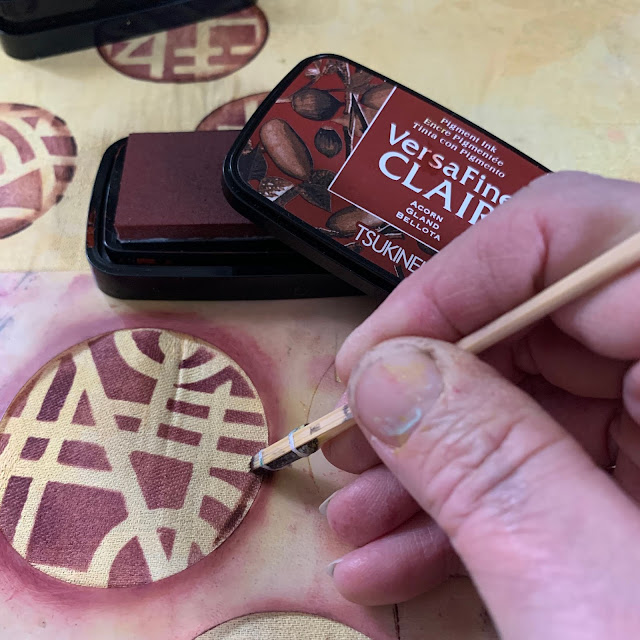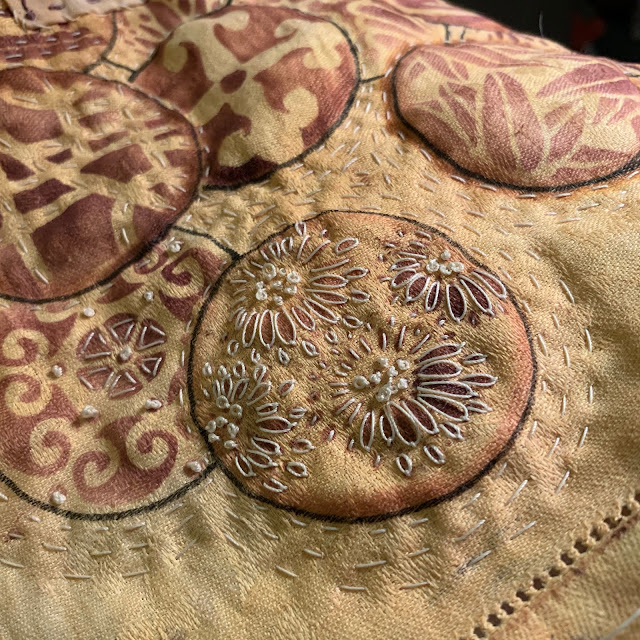Do you – like me – love
the look and feel of embossed paper?
Have you – as I once did – felt it would be too hard to make your own?
Fear no more!
Readers with fiber arts
experience probably know about Paper Solvy. Dry, it’s like paper. But, with enough water, it dissolves. In fiber arts, it’s a temporary stabilizer. Once stitched, the fabric is washed and the
stabilizer melts away.
But I use PaperSolvy – and StencilGirl® stencils or masks! – to make “embossed paper.”
For the most dramatic embossing results,
I recommend stencils and masks with large openings.
Here, I’m using…
After
spreading absorbent papers, I gather my watercolor bottles, Solvy and cake
cooling racks.
Note:
I could use readymade sprays like Colorations
– but I use DrPh Martins watercolors. They come in
bottles with “eyedropper” lids, so, to make custom color-blends, I drop Martins
colors into clear plastic 2-ounce mister spray bottles, and shake to mix.
Next,
I place a stencil or mask on each rack.
Over the stencil or mask goes a
sheet of Paper Solvy.
Now
I start slowly spraying the Solvy with watercolors.
Gradually the Solvy dissolves to form sagging areas that
will resemble embossing.
If the colors start to look too dark for me, I lighten them
by alternating the color sprays with sprays of plain water.
Too much spray will create holes, so I stop spraying when
the stencil or mask outlines become raised.
Each rack’s support bars will gradually
take shape right along with the shapes of the stencil or masks. I’ve tried this technique without the racks,
but no other method has worked well for me.
So I accept the racks’ lines as part of the finished product. Racks with square patterns, instead of lines,
are an option for anyone who loves grids!
After the Solvy dries, I peel it
carefully off the rack. Then I gently
peel the Solvy away from the stencil or mask.
After Solvy dries, it cuts like
paper. Dried embossed areas can be
emphasized with dry-brush painting, Pan Pastels, metallic rub-ons, etc.
To see more embossed
samples, please visit me here.




















































